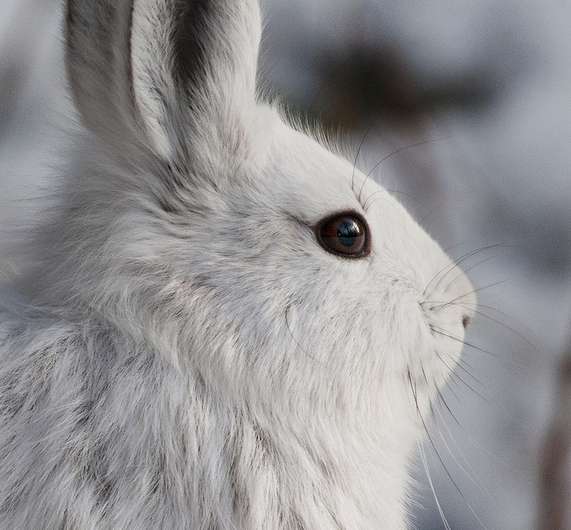Kill the rabbit

Snowshoe hares arrived on tiny Hay Island, at the mouth of the Bay of Fundy, in 1959, traveling by boat from Grand Manan Island, New Brunswick, Canada, with Wesley Ingalls and his nephew, Junior. The two fishermen had the idea that trapping hares would make an entertaining winter activity, when they were not fishing, and bring in a little extra money.
With no competitors and few predators, Ingalls' original dozen hares quickly became several hundred. When low tide opened a causeway to neighboring Kent Island, they hopped across. Junior went out to Hay two years later to harvest young balsam firs for his herring weir, as was his custom. The forest stand never grew back. A bramble of wood fern and raspberry grew up in its place, crowding out other plants and providing excellent cover for bunnies hiding from bald eagles and wintering snowy owls.
Snowshoe hares are native to North America and range across the north of the continent from Alaska to the coast of Maine, but had not colonized the remote islands of the Bay of Fundy, 15 miles off the coast of Maine, without human help. On Hay and Kent their population reached 3-50 times the density of hare populations on the Maine mainland. They had an impact. Intrepid eaters, the hares mowed though young saplings as well as grass. In winter they even climbed the bases of trees to gnaw on twigs and bark. As mature trees aged and blew down in storms, no young trees grew to replace them. The hares bonsaied surviving young spruces into the shape of alpine cushion plants. For nearly five decades, the hares shaped the vegetation of Hay and Kent islands. Ingalls had unintentionally initiated and ecological experiment by introducing a keystone herbivore to the island.
Kent island also happens to house Bowdoin College's biological field research station, originally established in 1930s as a preserve for the then near-extinct common eider (Somateria mollissima, the largest duck in the northern hemisphere, now stable in the tens of thousands, in a conservation success story). In 1998 Nathaniel Wheelwright, a professor at Bowdoin and then the director of the Bowdoin Scientific Station, set out to eradicate the snowshoe hare with the help of Junior's son and grandchildren. The hares came back. They tried again 2002, with additional recruits from Maine and New Brunswick, but failed again.
Wheelwright decided he needed help from the experts. He emailed the chief of New Zealand's national pest control agencies, who replied, "Eradicating the hares using hunters and dogs from 70 ha ought to be trivial. You're not trying very hard." The team tried harder, and in 2007, succeeded in removing the last hare. Now, Bowdoin's Scientific Station is observing the experiment in reverse. A think carpet of tree seedlings covers the forest floor. The trees are so successful in recolonizing open fields that they threaten the breeding habitat of the islands' savanna sparrows, under observation by the station since the 1960s.. In an ironic twist, station biologists will have to mow fields to hold back the resurgent forest and preserve a long-running study from the era of the hare.
More information: Nathaniel T Wheelwright. Eradication of an ecosystem engineer, Frontiers in Ecology and the Environment (2016). DOI: 10.1002/fee.1221
Journal information: Frontiers in Ecology and the Environment
Provided by Ecological Society of America

















